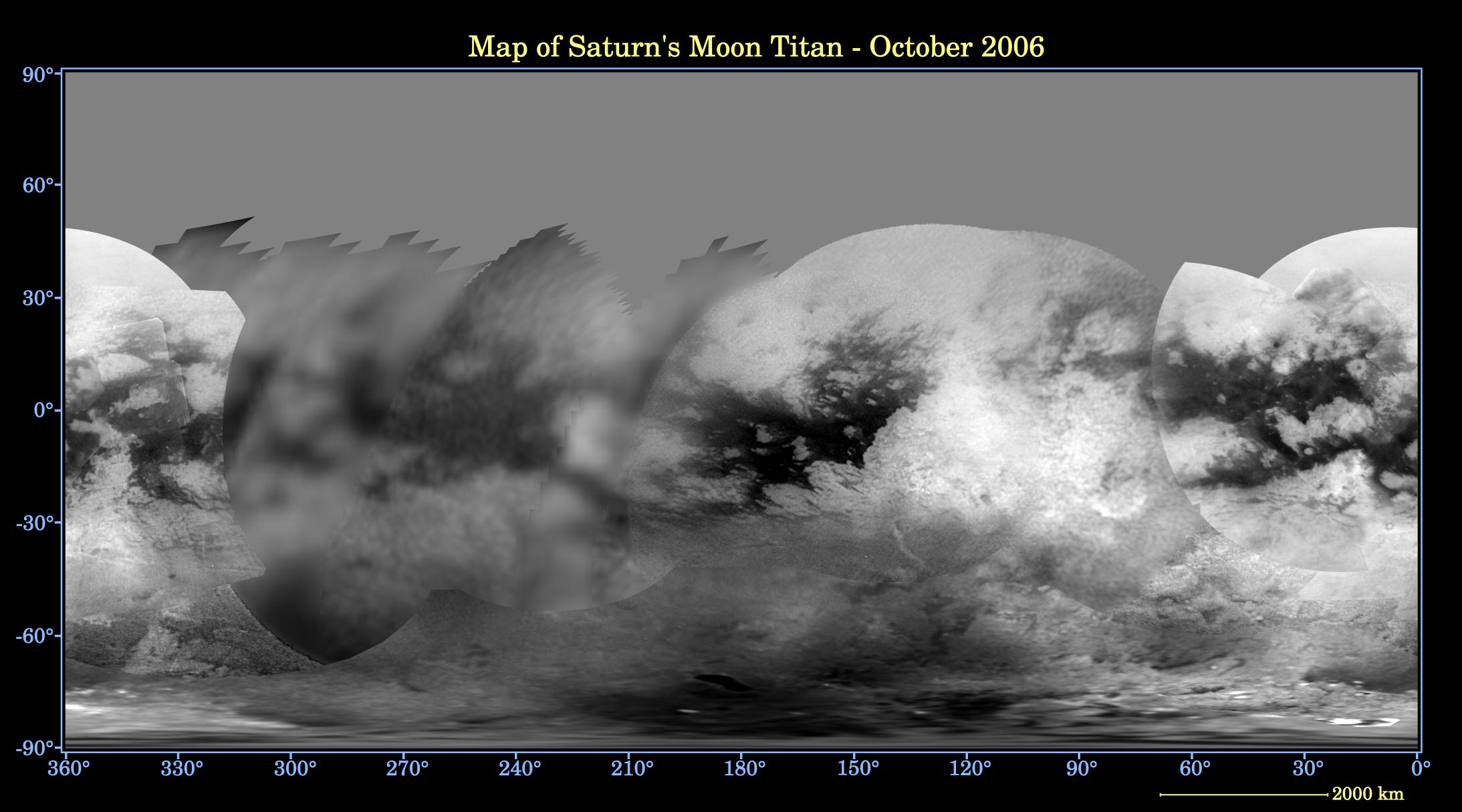Map of Titan – December 2006

| PIA Number | PIA08346 |
|---|---|
| Language |
|
This global digital map of Titan was created using data taken by the Cassini spacecraft Imaging Science Subsystem (ISS).
The data here consist of images taken using a filter centered at 938 nanometers, allowing researchers to examine albedo (or inherent brightness) variations across the surface of Titan. Due to the scattering of light by Titan's dense atmosphere, no topographic shading is visible in these images.
The map is an equidistant projection and has a scale of 2 kilometers (1.25 miles) per pixel. Equidistant projections preserve distances on a body, with some distortion of area and direction. Actual resolution varies greatly across the map, with the best coverage (close to the map scale) near the center and edges of the map and the worst coverage on the trailing hemisphere (centered around 270 degrees west longitude).
Coverage should improve in some of the poorly covered areas starting in February 2007, when northern Belet, Adiri, and Dilmun will be imaged. Imaging coverage in the northern polar region, currently blank on this map, will improve over the next few years, as Titan approaches vernal equinox in August 2009.
The mean radius of Titan used for projection of this map is 2,575 kilometers (1,600 miles). Until a control network is created for Titan, the satellite is assumed to be spherical.
A labeled version of the map is available here.
The named features are designated by the International Astronomical Union. (A "facula" on Titan is a bright spot; a "macula" is a dark spot.)
This map demonstrates how our knowledge of Titan's surface has been vastly improved since Cassini arrived and began mapping the outsize moon. See Mapping Titan's Surface and Titan's Variety (with Grid) for earlier Cassini maps of Titan.
The Cassini-Huygens mission is a cooperative project of NASA, the European Space Agency and the Italian Space Agency. The Jet Propulsion Laboratory, a division of the California Institute of Technology in Pasadena, manages the mission for NASA's Science Mission Directorate, Washington, D.C. The Cassini orbiter and its two onboard cameras were designed, developed and assembled at JPL. The imaging operations center is based at the Space Science Institute in Boulder, Colo.
For more information about the Cassini-Huygens mission visit http://saturn.jpl.nasa.gov . The Cassini imaging team homepage is at http://ciclops.org .
Credit: NASA/JPL/Space Science Institute
